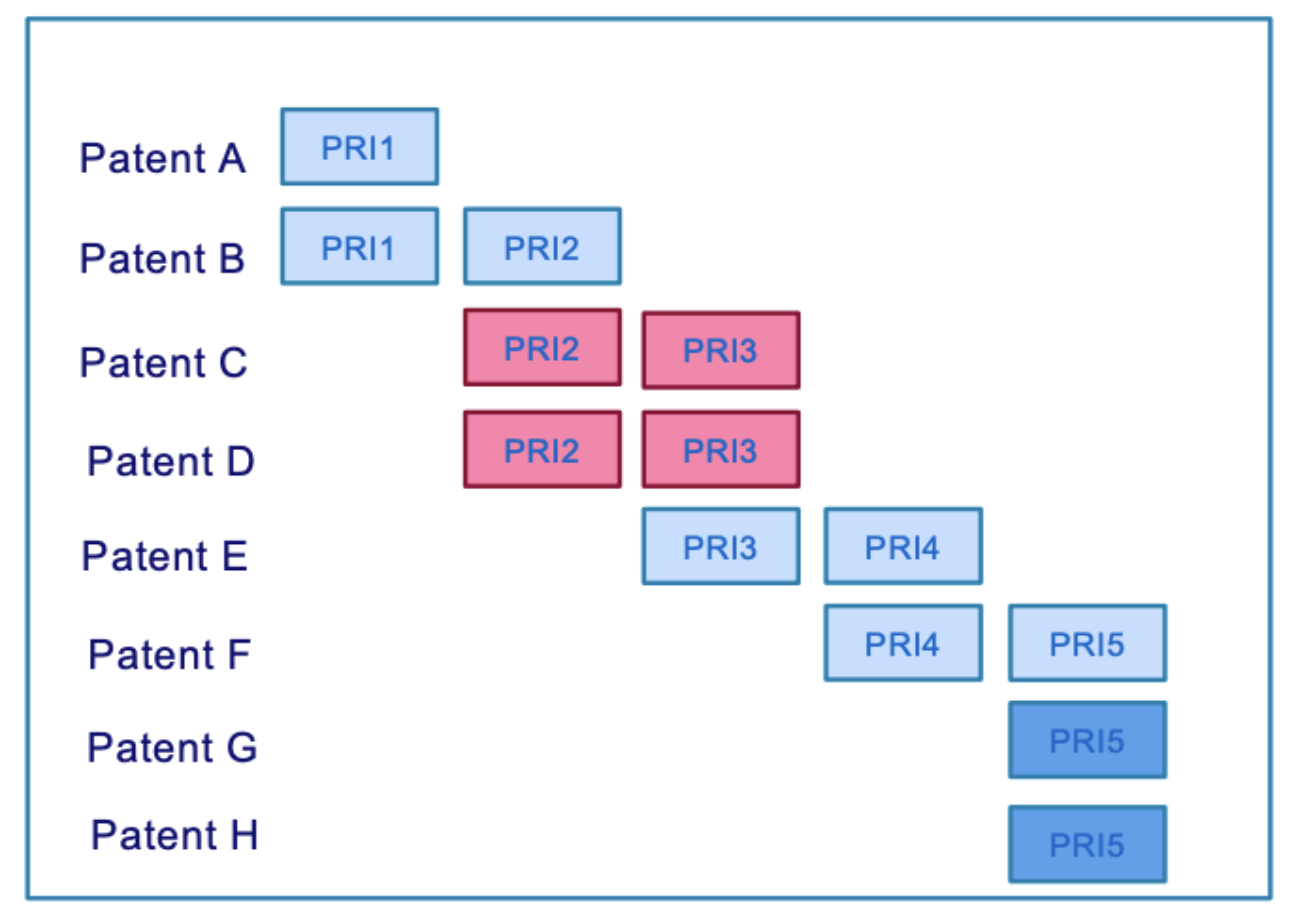Unified Patents’ Portal now includes INPADOC Extended families. You can now search by and expand by Extended Family ID.
These features are available in the Patent Search portal, as well as OPAL’s IEEE, 3GPP, and Video Codec landscapes, to enable accurate top-down counting and analysis.
DOCDB simple families typically include a collection of patent applications covering the same technical content.
The charts below describe how a set of patents can have 4 separate simple families. The priorities taken into account are:
First filings - A first filing is a foreign application claimed under the Paris Convention.
Provisional first filings - A provisional first filing is a U.S. provisional application.
Equivalents to first filings - An equivalent to a first filing is a U.S. continuation-in-part.
The concept of a “simple” family excludes:
Applications that are a continuation of an existing parent application
Applications that are a division of an existing parent application
Continuations and divisions are considered to cover the same technical content as the parent application. Continuations and divisions will always be in a patent family with the parent application, regardless of the priorities that they claim.
Figure 1 - DOCDB SIMPLE FAMILY
Figure 2 - INPADOC EXTENDED FAMILY
(Landscape Study of Potentially Essential Patents Disclosed to ETSI)
An extended patent family is a collection of patent documents covering a technology. The technical content covered by the applications is similar, but not necessarily the same. Members of an extended patent family will have at least one priority in common with at least one other member - either directly or indirectly. Hence, the four families above, become one extended family.
Therefore, the priorities taken into account are:
First filings, provisional first filings, and equivalents to first filings (for definitions of these terms, see above)
Priorities that refer to an earlier related application, whether a domestic or a PCT filing
Click HERE to see Unified’s INPADOC extended families search capabilities.




